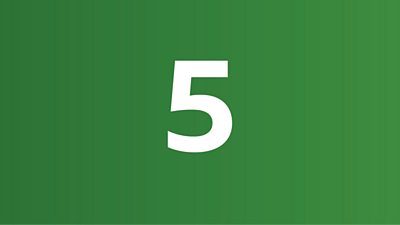5.1 Introduction
The ���˿��� aims to reflect the world as it is, including all aspects of the human experience and the realities of the natural world. The ���˿��� must balance its right to freedom of expression, which allows it to publish innovative and challenging content, with the responsibility of avoiding unjustifiable offence.[1]
Creative risk-taking is a vital part of the ���˿���'s mission. However, in all output, the greater the risk of causing harm or offence, the greater the thought, care and planning required.
The ���˿��� has a right to freedom of expression under human rights legislation, which is reflected in the Charter. Freedom of expression includes the audience's right to access creative material, information, ideas, and content that may be contentious or offensive without interference but subject to restrictions prescribed by law and necessary in a democratic society.
For the purposes of the Editorial Guidelines and unless stated otherwise, a child is someone under the age of 16 years. Young people are those aged 16 and 17.[2] It should be noted that these are not legal definitions.
5.2 Principles
5.2.1 The ���˿��� must protect audiences from offensive and harmful material unless it has sufficient editorial purpose. Content that is potentially highly offensive will need the strongest editorial justification.
5.2.2 Content makers should take account of 'generally accepted standards' as well as audience expectations when considering publishing potentially offensive or harmful material. The publication or broadcast of such content must be justified by the context. Potentially offensive content includes strong language, violence, sex, sexual violence, humiliation, distress, violation of human dignity, and discriminatory treatment or language.
5.2.3 Audiences must have clear information to allow them to assess whether content will be suitable for them.
5.2.4 The use of strong language must be editorially justified and appropriately signposted to ensure it meets audience expectations, wherever it appears.
5.2.5 Material that might seriously impair the physical, mental or moral development of children and young people must not be broadcast.
5.2.6 The responsibility to protect children and young people from potentially harmful or offensive content must be balanced with their rights to freedom of expression and freedom to receive information.
5.2.7 Material that might be unsuitable for children must be appropriately scheduled – in television, observing the 9pm watershed and, in radio, having regard to times when children are particularly likely to be listening. Online material must be suitably placed and labelled.
5.3 Mandatory Referrals
Mandatory referrals must be referred in advance. Mandatory referrals are an essential part of the ���˿���'s editorial and compliance process and must be observed.
Referrals to Director Editorial Policy and Standards
5.3.1 Any proposal to show the real moment of someone's death must be referred to Director Editorial Policy and Standards.
(See 5.4.37)
5.3.2 Any proposal to publish or broadcast a depiction of the Prophet Muhammad must be referred to a senior editorial figure who must consult Director Editorial Policy and Standards.
(See 5.4.67)
Other Referrals
5.3.3 Programmes broadcast on UK television between 5.30am and 9pm must be suitable for a general audience which might include children. Only in exceptional circumstances can there be any departure from this practice. Any proposed exceptions must be referred to the person running the channel and clear content information should be given.
Programmes that straddle the watershed should normally be pre-watershed compliant throughout. Exceptionally, it may not be necessary where the audience is not expected to be the same throughout the programme. Editorial Policy must be consulted.
5.3.4 Any proposal to use the strongest language (cunt, motherfucker or fuck and its derivatives) must be referred to and approved by the relevant head of channel, who should consider the editorial justification. Editorial Policy may also be consulted.
(See 5.4.31)
5.3.5 The divisional director, or their named delegate, must approve the use of the strongest racist language, as listed in Ofcom's 'strong' column, in any upcoming programmes or output.[3]
5.3.6 Any proposal to include graphic scenes of animal cruelty or apparent mistreatment must be referred to a senior editorial figure or, for independent production companies, to the commissioning editor. It will require strong editorial justification even if the content is recorded in countries where it is legal.
(See 5.4.42)
5.3.7 Any proposal to include a hanging scene, portray suicide, attempted suicide or self-harm requires careful consideration because of the sensitivity of the subject and the possibility of imitation and must be referred to a senior editorial figure or, for independent production companies, to the commissioning editor. Referral must also be made to Editorial Policy.
(See 5.4.58)
5.3.8 Any proposal to feature a demonstration of hypnosis must be referred to a senior editorial figure or, for independent production companies, to the commissioning editor, who must consult Editorial Policy.
(See 5.4.69)
5.3.9 Any proposal to include flashing images or strobing sequences in recorded programmes which fail the Transmission Review technical checks must be approved by the relevant output controller.
(See 5.4.72)
5.3.10 Any techniques which exploit the possibility of conveying a message to audiences or otherwise influencing their minds, without their being aware, or fully aware, of what has occurred must not be used. Such techniques may include subliminal messages and images of very brief duration. Anyone who has reason to believe their content might contain such a technique must refer to a senior editorial figure or, for independent production companies, to the commissioning editor, who should consult Editorial Policy.
(See 5.4.73)
Footnotes
- [1] The sections of the Ofcom Broadcasting Code that relate to this are and . For how we deal with Under-18s who contribute and interact with our content see Section 9:Children and Young People as Contributors ↩
- [2] This is a higher standard than the Ofcom Broadcasting Code requires in . That says 'Children are people under the age of fifteen years'.↩
- [3] ↩

